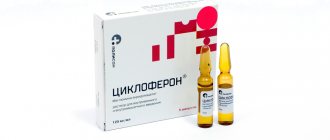Metoject
Patients should be clearly informed that the drug should be used once a week and not daily.
Methotrexate is cytotoxic and must be handled with caution.
Patients undergoing Metoject therapy should be closely monitored to ensure that signs of potential toxicity and adverse reactions are detected and assessed with minimal delay.
Due to the possible development of severe or even fatal adverse reactions, patients should be fully informed by their physician about the possible risks and recommended safety measures.
Recommended Research and Safety Measures
Before starting or resuming treatment with methotrexate, a complete blood count and platelet count should be performed; biochemical blood test with determination of liver enzyme activity, bilirubin concentration, serum albumin; chest x-ray, kidney function test. If necessary, carry out tests for tuberculosis and hepatitis.
During treatment (at least once a month in the first 6 months of treatment, then at least once every 2 months), the following studies must be carried out:
1. Examination of the oral mucosa and pharynx.
2. Complete general blood test with platelet count determination. Suppression of hematopoiesis caused by methotrexate can occur suddenly, incl. when using the drug in small doses. In any case of a significant decrease in the number of leukocytes or platelets, it is necessary to immediately interrupt treatment with methotrexate and carry out adequate supportive therapy. Patients should be advised to report any signs and symptoms of possible infections. Patients who are concomitantly receiving drugs that suppress hematopoiesis (for example, leflunomide) require careful monitoring of blood counts and platelet counts.
3. Liver function test. Particular attention should be paid to identifying possible toxic effects on the liver. Treatment should not be started or interrupted if, during appropriate examinations, liver function abnormalities that were present before the start of treatment or that developed during treatment are detected. Typically, disorders that develop during treatment return to normal within 2 weeks after interruption of methotrexate therapy, after which, at the discretion of the attending physician, treatment can be resumed.
When methotrexate is used for rheumatoid arthritis, there is no obvious need for liver biopsy to monitor liver toxicity.
Particular attention should be paid to patients with risk factors such as excessive alcohol consumption, persistent elevation of liver enzymes, history of liver disease, diabetes mellitus, obesity, history of use of hepatotoxic drugs or drugs that affect hematopoiesis.
Monitoring of serum liver enzymes: transient 2-3 times higher than normal transaminase values were reported in 13-20% of patients. In the event of a persistent increase in liver enzyme activity, dose reduction or discontinuation of treatment should be considered.
Due to the toxic effects of the drug on the liver during treatment, patients should avoid concomitant use of other hepatotoxic drugs unless clearly necessary; You should also avoid drinking alcohol.
In patients using other hepatotoxic drugs or drugs that inhibit hematopoiesis (for example, leflunomide), liver enzyme activity and complete blood count parameters with platelet count should be carefully monitored.
4. Monitoring kidney function and urine analysis. Because Methotrexate is excreted mainly by the kidneys; in case of insufficiency of renal function, an increase in the concentration of methotrexate in plasma should be expected, which can lead to serious undesirable side effects. In cases of possible decline in renal function (for example, in elderly patients), control examinations should be performed more frequently. This also applies to cases of simultaneous administration of drugs that affect the elimination of methotrexate, drugs that can lead to kidney damage (for example, NSAIDs), as well as drugs that can affect the hematopoietic system. Dehydration may also increase the toxicity of methotrexate.
5. Examination of the respiratory system. Particular attention should be paid to symptoms of deteriorating pulmonary function, and appropriate tests should be carried out if necessary. Symptoms of respiratory damage (especially dry nonproductive cough), nonspecific pneumonitis that occur during methotrexate therapy may indicate a potentially dangerous disease and require interruption of treatment and a thorough examination in order to make a diagnosis. Clinical symptoms of methotrexate-induced lung injury are varied, but typical signs are fever, cough, difficulty breathing, and hypoxemia. An X-ray examination of the chest is mandatory to exclude the presence of infiltrates or infection. The possibility of respiratory disease caused by the use of methotrexate does not depend on the doses of the drug used.
If the dose of methotrexate is increased, the frequency of examinations should be increased.
Methotrexate affects the immune system, can worsen the response to vaccination and affect the results of immunological tests. Particular caution is required when using the drug in patients with chronic infectious diseases outside periods of exacerbation (Herpes zoster, tuberculosis, hepatitis B or C) due to the possibility of exacerbation of the disease. Refusal from immunization is required. The interval between the use of methotrexate and the administration of live and inactivated viral vaccines should be at least 3 months, possibly up to 12 months (depending on the immune status of the patient).
If diarrhea and ulcerative stomatitis develop, methotrexate therapy should be interrupted.
Do not expose unprotected skin to too much sunlight or ultraviolet irradiation for too long (possible photosensitivity reaction).
Patients receiving low doses of methotrexate may develop malignant lymphoma; in these cases, treatment should be discontinued. In the absence of signs of spontaneous regression of lymphoma, cytotoxic therapy is necessary.
When using methotrexate, osteonecrosis and osteoporosis may develop (with a frequency of ≥ 1/1000, < 1/100), which increases the risk of fractures.
Shows mutagenic activity in vivo and in vitro. A carcinogenicity study in rodents did not show an increase in the incidence of tumors with methotrexate.
Impact on the ability to drive vehicles and operate machinery
Since methotrexate can have an effect on the central nervous system (fatigue, dizziness), the patient should refrain from driving and operating machinery during treatment.
Metojekt, 10 mg/ml, solution for injection, 1.5 ml, 1 pc.
Patients should be clearly informed that the drug should be used once a week and not daily.
Methotrexate is cytotoxic and must be handled with caution.
Methotrexate affects fertility and is an embryo-, fetotoxic and teratogenic drug. Shows mutagenic activity in vivo
and
in vitro.
A carcinogenicity study in rodents did not show an increase in the incidence of tumors with methotrexate.
Patients undergoing treatment with Metoject should be closely monitored to ensure that signs of potential toxicity and adverse reactions are detected and assessed with minimal delay.
Methoject should only be prescribed by a physician with sufficient knowledge and experience in anti-metabolic therapy.
Due to the possible development of severe or even fatal adverse reactions, patients should be fully informed by their physician about the possible risks and recommended safety measures.
Recommended examinations and safety measures
Before starting or resuming treatment with methotrexate:
a complete general blood count should be performed to determine platelet levels; biochemical blood test with determination of the values of liver enzymes, bilirubin, serum albumin; chest x-ray, kidney function test. If necessary, tests for tuberculosis and hepatitis.
During treatment (at least once a month in the first 6 months of treatment, then at least once every 3 months) it is necessary to:
1. Examination of the oral mucosa and pharynx.
2. Complete general blood test with platelet level determination. Suppression of hematopoiesis caused by methotrexate can occur suddenly, incl. when using the drug in small doses. In case of a significant decrease in the number of leukocytes or platelets, it is necessary to immediately interrupt treatment with methotrexate and carry out adequate supportive therapy. Patients should be advised to report any signs and symptoms of possible infections. Patients concomitantly using hematotoxic drugs (eg leflunomide) should be carefully monitored with monitoring of blood counts and platelet counts.
3. Liver function tests: Particular attention should be paid to identifying possible toxic effects on the liver. Treatment should not be started or should be interrupted if liver function abnormalities that were present before treatment or that developed during treatment are detected during appropriate tests or biopsy. Usually, disorders that develop during treatment return to normal within 2 weeks after interruption of methotrexate therapy, after which, at the discretion of the attending physician, treatment can be resumed.
When methotrexate is used for rheumatological indications, there is no obvious need for liver biopsy to monitor liver toxicity.
Particular attention should be paid to patients with risk factors such as excessive alcohol consumption, persistently elevated liver enzymes, history of liver disease, diabetes mellitus, obesity, history of use of hepatotoxic drugs or drugs that affect hematopoiesis.
Monitoring serum liver enzymes: Transient transaminase levels 2 to 3 times higher than normal have been reported in 13–20% of patients. If there is a persistent increase in liver enzyme levels, dose reduction or discontinuation of treatment should be considered.
Due to the toxic effects of the drug on the liver during treatment, patients should avoid concomitant use of other hepatotoxic drugs unless clearly necessary; Alcohol consumption should also be avoided or significantly reduced.
Liver enzyme levels should be carefully monitored in patients taking other hepatotoxic or hematotoxic drugs (eg leflunomide).
4. Monitoring kidney function and urine analysis.
Since methotrexate is eliminated primarily by the kidneys, increased plasma levels of methotrexate should be expected in cases of renal impairment, which may result in serious adverse side effects.
In cases of possible decline in renal function (for example in elderly patients), control examinations should be carried out more often. This also applies to cases of simultaneous administration of drugs that affect the elimination of methotrexate, drugs that can lead to kidney damage (for example, NSAIDs), as well as drugs that can affect the hematopoietic system.
Dehydration may also increase the toxicity of methotrexate.
5. Examination of the respiratory system.
Particular attention should be paid to symptoms of deteriorating pulmonary function, and appropriate tests should be carried out if necessary. Symptoms of respiratory damage (especially dry nonproductive cough), nonspecific pneumonitis that occur during methotrexate therapy may indicate a potentially dangerous disease and require interruption of treatment and a thorough examination in order to make a diagnosis. Clinical symptoms of methotrexate-induced lung injury are varied, but typical signs are fever, cough, difficulty breathing, and hypoxemia. An X-ray examination of the chest is mandatory to exclude the presence of infiltrates or infection.
The possibility of respiratory disease caused by the use of methotrexate does not depend on the doses of the drug used.
If the dose of methotrexate is increased, the frequency of examinations should be increased!
Methotrexate affects the immune system and may impair the response to vaccinations and affect the results of immunological tests. Particular caution is required when using the drug in patients with chronic infectious diseases outside of periods of exacerbation ( herpes zoster,
tuberculosis, hepatitis B or C) due to the possibility of exacerbation of the disease.
Refusal from immunization is required.
The interval between the use of methotrexate and the administration of live and inactivated viral vaccines should be at least 3 months, possibly up to 12 months (depending on the immune status of the patient).
If diarrhea and ulcerative stomatitis develop, methotrexate therapy should be interrupted.
Do not expose unprotected skin to too much sunlight or overuse UV lamps (photosensitization reaction is possible).
Combination with radiation therapy may increase the risk of bone marrow suppression.
Malignant lymphomas may occur in patients using low doses of methotrexate; in these cases, treatment should be discontinued. In the absence of signs of spontaneous regression of lymphoma, cytotoxic therapy is necessary.
When using methotrexate, osteonecrosis and osteoporosis may develop (≥1/1000, <1/100, “Side effects”), which increases the risk of fractures.
Impact on the ability to drive a car or perform work that requires increased speed of physical and mental reactions.
Since methotrexate can have an effect on the central nervous system (fatigue, dizziness), patients using the drug should refrain from driving or using machinery.



